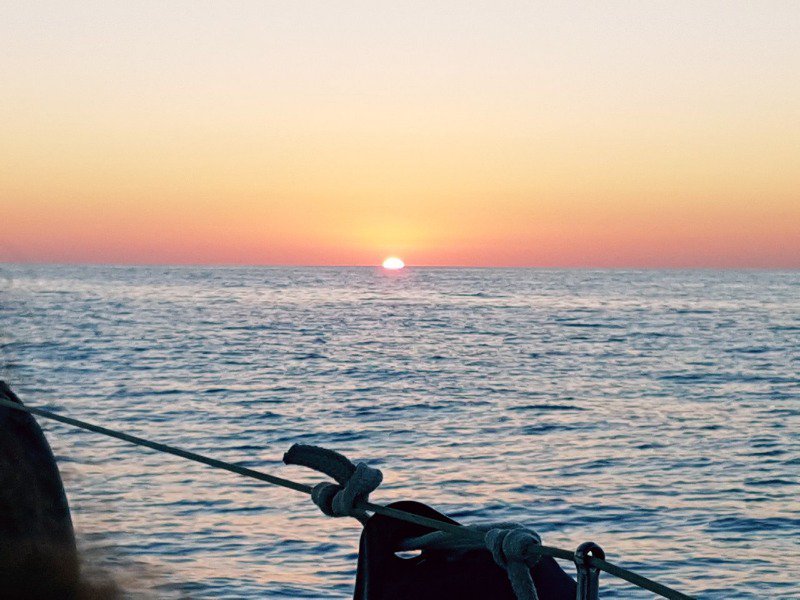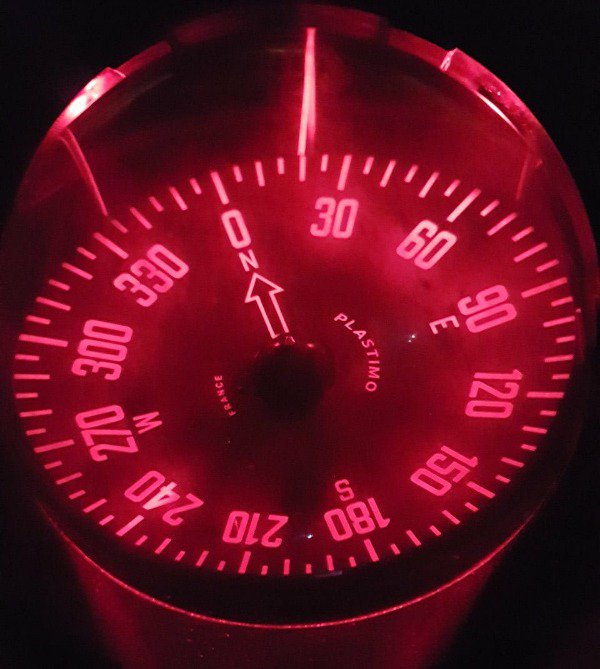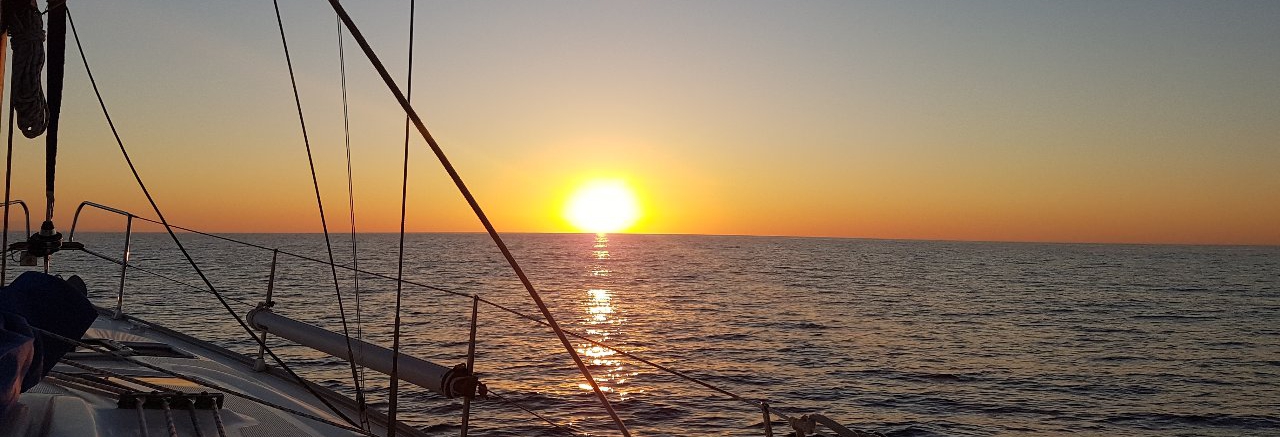Thanks to Boatsandgo you have been able to easily choose from thousands of offers from hundreds of sites and now that you have rented the right boat, you are enjoying the well-deserved relax time.
If you have chosen to spend your holidays on a boat you certainly already have a good predisposition for the sea. Needless to say, there is a strict hierarchy on board so, the skipper or commander, whether he is part of your group or external and does his job, will always and in any case be at the top of the chain of command and his directions must always be followed without hesitation (or discussions).
Among the various onboard operations, sailing at night is definitely one of the most fascinating. Plus, it's always a way to optimize your time and maybe take advantage of a whole day in a new place. The preliminary activities are always a direct task of the commander only, evaluating the marine weather conditions and plotting a course are certainly not tasks for everyone and it takes a good amount of technical knowledge and experience. Nonetheless, you follow your skipper or captain closely, during the planning, you will have the opportunity to learn a lot but, above all, you will get a concrete idea of what awaits you during the navigation.

If you have reached this point you are evidently not cruise tourists, of those who spend the night in the cabin and expect a gourmet dinner maybe in elegant clothes. So, get ready because if you can't contribute that much in the planning, your help will be more than welcome in the actual preparation. If you are in port, with the rest of the crew, prepare a check list of what you need "from the ground", both for the galley of the boat and for personal needs. A good commander will repeat to you many times that "at sea there are no taverns". Then you have to carry out the operations that strictly concern the boat, fill up the tanks with fresh water, get rid of the garbage (scrupulously respecting the local rules, inform yourself well at the marina or with the moorings guys) detach and store neatly in the lockers all the equipment used in port, the extension cord for electricity and the water pipe for example. If instead, you are in a bay, on the anchor, prepare a "disembark group" to land and retrieve the most important things that are missing on board. In this case much will depend on where you are but it is generally better to limit yourself to pick what is strictly necessary. The departure operations in this case will concern the safety of the dinghy and all the equipment you used during your stop (snorkeling, fishing, etc.).
At this point you are ready to leave. So stay tuned and hear the orders of the commander to help during the exit from the port or to set sail the anchor. During these excited moments it is recommended to wear comfortable boat shoes with a strictly white sole that does not leave stains on the deck.

On course
If you have followed the planning time or, if the person in command has done a pre-departure briefing, you will know when you will be "On Course". Autopilot will be inserted (an instrument with which it is essential to familiarize yourself), and you can relax. Obviously, anyone who is at the helm (delegated by the commander), will still have to remain vigilant and will have full responsibility for navigation. The rest of the crew will enjoy the sunset. This brings us to one of the fundamental points for your sailing nights, the "shifts".
Shifts
There is no need to say that during navigation, at all times, on every second there will be someone of the crew who will have the responsibility to be alert. It will then be necessary to establish shifts. How these shifts are to be organized is, of course, the task of the commander, based on the composition of the crew, the number, the skills and the confidence that is put in the individual members, he will divide equally the shifts. If the number allows, it is always recommended to take shifts of at least two people at a time. it's a better way to make sure there's definitely someone awake on deck. The commander, when not on guard directly, will always rest with light sleep. in fact, any small variation or doubt of the guard team, will require to call him immediately. These are the first and fundamental rules of shifts, so, never sleep when on guard and the commander always remains in charge even if he sleeps.
The helm
As mentioned, the course is preset and actually the helm is operated by autopilot. Unless you are sailing but, in that case, you will surely have someone with you capable of maneuvering, it should not be necessary to touch the rudder. If there are obstacles to avoid or traffic, it is always better to wake up the commander before changing course.
The Lights
You will spend most of your night shift watching for lights in the dark, lights of those who like you are navigating that arm of sea, lights from the ground. All to be identified and monitored. The lights from the ground, of a city, an island or a lighthouse, help you to know where you are, it is good to always have them present and make sure that you are at the right distance since near the coast there can always be unforeseen obstacles. Lights from other boats, on the other hand, require intense and constant surveillance, which route it follows? What kind of boat or ship is it? What is it doing (fishing, transport)? How fast is it going? All questions to which you must try to give an answer. Normally you will have identified them in time and therefore you can make your suppositions calmly, perhaps comforted by the opinion of your watchmate. With experience you will learn to distinguish the navigation lights, which will help to understand how other boats move and also the lights typical of each type of vessel. For beginners it is enough to evaluate the speed and direction and, if it quickly approaches and intercepts your course, well wake up the commander and give a quick report of what you have seen.

End of shifts
It is always polite to prepare coffee for those who take over (possibly without making so much noise and always leaving one on guard). Once on deck, before going to sleep the outgoing team will give remarks, pointing out to those who take over all the "active" lights at the time of the change, along with their impressions of them.
Clothing and equipment
At sea even in the middle of summer at night it is cold. The thermal excursion is really relevant so I recommend pants and light jacket and boat shoes. In addition, it is essential to have a powerful flashlight at hand and always keep the VHF on, tuned to channel 16.

What about the fun?
During the shifts, sooner or later, you will happen to be on the deck at dawn, an exclusive and beautiful moment. I will never forget my first dawn, when in the darkness the Stromboli appeared, I knew that it was there because as a lighthouse had guided us with fireworks almost all night, but to slowly see the volcano materializing right before me, was unbelievable. Often, at night if you happen to hear noises overboard, don't get scared, grab the flashlight and look into the sea, it's probably a group of dolphins that decided to follow your bow and play for a bit. Or you can sit quietly aft and suddenly realize that you have a fantastic light trail of jellyfish. In short, every night is a real experience that will leave you with indelible memories that, of course, will enrich your seaman's luggage. After you've been on a guard shift, when you get to a port, you can't help but feel a little more as a real sea dog.

